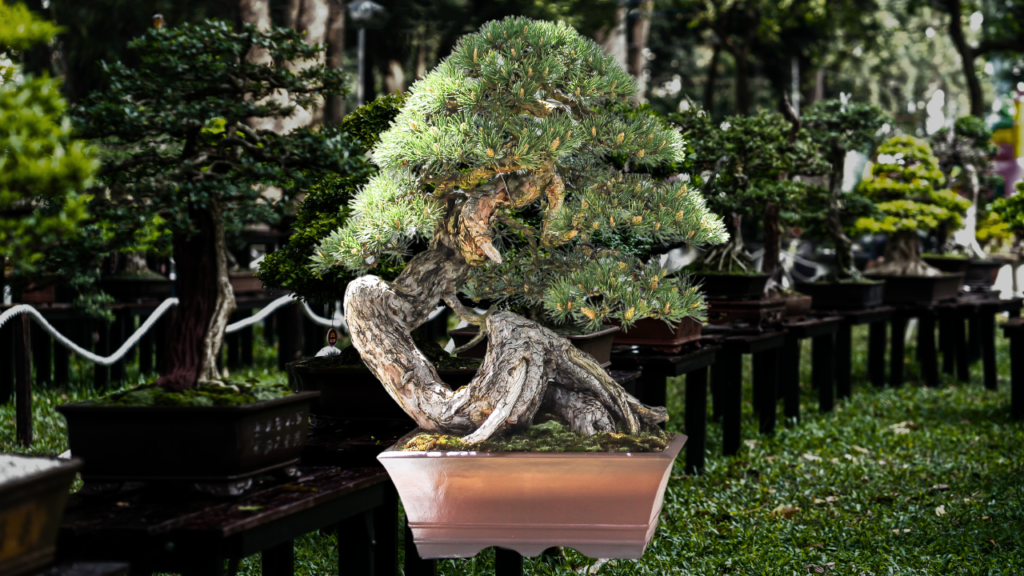Junipers are among the most popular trees for bonsai artistry due to their elegant appearance and adaptability. Their hardy nature and beautiful evergreen foliage make them a favorite among both novice and experienced bonsai enthusiasts. Here’s a detailed care guide to help your Juniper bonsai flourish:
| Juniper Bonsai Quick Reference | |
|---|---|
| Attribute | Information |
| 🌾Plant Type | Evergreen coniferous trees or shrubs |
| 🍃Foliage | Can have needle-like or scale-like foliage |
| ☀️Sun Exposure | Bright location with lots of sunlight. Cannot live indoors. Some species change foliage color during frosty periods. |
| ❄️Hardiness | Protect when temperatures drop below 15 °F (-10 °C) |
| 🌎Native Area | Various species originate from different regions, including Japan, China, Europe, North-America, and North-Africa |
| 🌲Popular Species Used | Japanese Garden Junipers (Green Mound Junipers), Chinese juniper, Japanese Shimpaku, Japanese needle juniper, Savin, Common juniper, California Juniper, Rocky Mountain Juniper, Sierra Juniper |
| 🍂Leaf Characteristics | Scale junipers have juvenile growth appearing needle-like until scale-like foliage appears. Color can range from steely-blue-greens to light greens, with occasional silver or gold hues. |
| 🍁Cones | Berry-like, round or oval, filled with seeds. Takes a year or two to ripen. |
1. Positioning and Light:
- Sunlight: Junipers require several hours of direct sunlight daily. If kept indoors, ensure they are placed near a south-facing window or under grow lights.
- Outdoor Living: Junipers are best suited for outdoor living. They require a dormant period in winter with colder temperatures. However, protect them from extreme cold or frost.
2. Watering:
- Frequency: Junipers prefer their soil to be slightly moist but not soggy. Water when the top layer of soil feels dry. Overwatering can lead to root rot.
- Method: Water thoroughly until excess moisture drains from the bottom. Ensure the pot has adequate drainage holes.
3. Humidity:
- While Junipers are tolerant of various humidity levels, they appreciate occasional misting, especially during hotter months.
4. Soil and Fertilizing:
- Soil: A well-draining soil mix is crucial. Consider a mix of akadama, lava rock, and pumice in equal parts.
- Fertilizing: Feed your Juniper with a balanced bonsai fertilizer every two weeks during the growing season (spring to early autumn). Reduce feeding frequency in winter.
5. Pruning and Shaping:
- Pruning: Regularly prune to maintain the desired shape. Focus on removing dead or excessive growth.
- Wiring: Junipers respond well to wiring, allowing for intricate designs. Apply wire during the growing season but monitor to prevent the wire from cutting into the bark.
6. Repotting:
- Repot Junipers every 2-4 years for younger trees and every 4-6 years for mature ones. Spring is the ideal time for repotting.
- Trim up to a third of the root mass during repotting to encourage healthy growth.
7. Pests and Diseases:
- Junipers can be susceptible to spider mites, aphids, and fungal diseases. Regularly inspect and treat promptly if issues arise.
- Neem oil or insecticidal soap can be effective treatments.
8. Common Issues:
- Brown Foliage: This can be a sign of spider mite infestation or root rot due to overwatering.
- Weak Growth: Often a result of insufficient light or inadequate fertilization.
Bonsai Care Essentials
Conclusion:
Juniper bonsai trees embody grace and resilience. With attentive care, the right environment, and a passion for the art, your Juniper bonsai will grow into a stunning representation of nature’s beauty.
